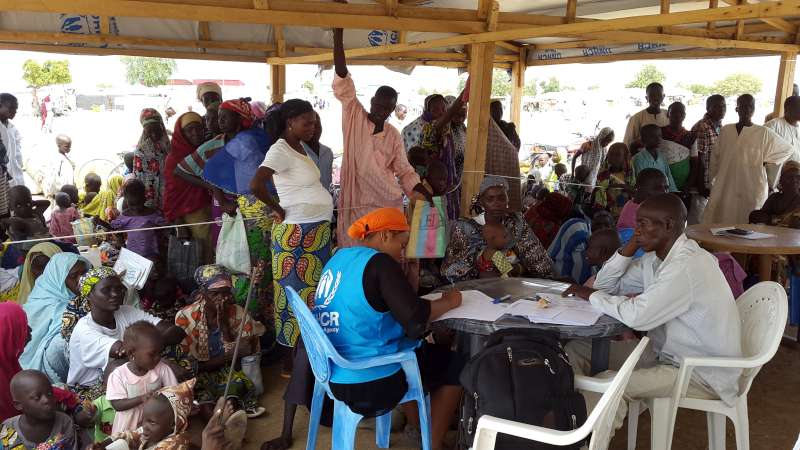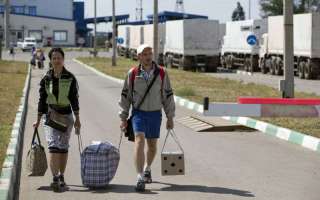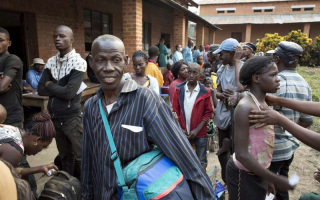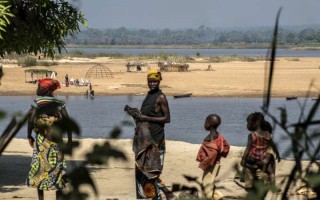
Newly-arrived Nigerian refugees register with UNHCR officials at Minawao Camp, northern Cameroon.
© UNHCR/D. Mbaiorem
GENEVA, July 21 (UNHCR)—Violence and insecurity have continued to affect population movements in northern Nigeria and neighbouring countries, the UN refugee agency reported on Tuesday (July 21).
In Cameroon’s remote Far North Region, a steady flow of Nigerian refugees are moving from the volatile Nigeria-Cameroon border area and seeking shelter some 100 km inland at the Minawao camp, which is run by UNHCR and its partners.
UNHCR field staff said that on average about 100 people every day are registering at the camp, which was opened in July 2013. The camp’s population has increased from about 30,000 late last year to approximately 44,000 today.
“The arrivals at the camp are mainly Nigerian nationals who had earlier fled to Cameroon to escape violence in north-east Nigeria but had preferred to stay very near the border—hoping for a quick return home. The refugees said they had fled militant attacks in Nigeria’s Borno state,” UNHCR spokesperson Leo Dobbs told a press briefing in Geneva.
In recent weeks, there have been attacks and clashes on the Cameroon side of the border, including the first-ever suicide bombing in Cameroon on July 12, in the far-northern town of Fotokol.
As part of its response to this unrest, the government of Cameroon has begun registering Nigerian refugees in the immediate border area.
“UNHCR field staff reported that this registration process has provoked fear among some refugees that they might be returned to Nigeria against their will,” Dobbs added.
He added that UNHCR and the government are in the process of consulting the refugees in the border area about where they want to go.
“Some may opt to return to safe areas in Nigeria, while others may want to move to the Minawao camp. This process will continue over the coming days and weeks,” he explained.
Some of the arrivals at the camp said they had run out of food when they were near the border and wanted to benefit from food distributions in Minawao. Many of the new arrivals are being temporarily sheltered in a tarpaulin-construction school, currently closed for the summer break.
The camp is in a relatively arid area; wood for building shelters has to be transported from the forested regions in southern Cameroon, which is at least two days trucking distance away.
“We have always had a problem with wood supplies,” one of the camp managers said: “and then when we do receive wood, we sometimes also face a shortage of nails to erect the shelters.”
Minawao camp is located within sight of the dramatic Mandara mountain range that rises up to straddle the border between Cameroon and Nigeria.
The mountains are one of the areas where the Nigerian insurgents are believed to have hideouts, refugees familiar with the area said. Soldiers from allied regional military forces – mainly from the armies of Nigeria, Chad, Niger and Cameroon – have been mounting joint operations against the insurgents for several months.
These actions are across large areas of west and central Africa. The military operations are reported to have dispersed some of the insurgents. But they have not stopped all insurgent activity.
UNHCR has limited access in the Far North Region for security reasons, but estimates the number of unregistered refugees in the area to be some 12,000. The Cameroonian authorities say this number may be as high as 17,000.
In a separate development in southern Niger’s Diffa region, authorities report the arrival of some 2,500 people from Nigeria following an attack by militants on the Nigerian town of Damassak last week.
The new arrivals are mainly women, children and older people. They arrived in the border villages of Chetimari and Gagamari, located 20 km from Damassak. According to the Niger authorities, some 80 per cent of those arriving are Nigerian refugees and the remaining 20 per cent Niger returnees.
Some of the new arrivals had fled their homes last year after a first attack on Damassak and returned only recently. Some refugees are staying with the same host families they stayed with last year while others sleep in the open or in makeshift shelters.
Most new arrivals said they prefer staying in Chetimari and Gagamari rather than the Sayam Forage refugee camp, further inland.
“They hope to return to Nigeria as soon as possible. Locals have been sharing their meagre resources with them, including water and food. UNHCR teams are unable to access the border area for security reasons,” Dobbs said.
More than 100,000 people have fled Nigeria and found refuge in Niger since mid-2013. The insecurity has also displaced 18,400 Nigerians to Chad and left at least 1.5 million people displaced within Nigeria, mainly in Adamawa, Borno and Yobe states.
By Mark Doyle/Helene Caux, West Africa





